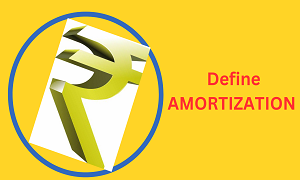19062023 Editorials STARTUPJARGON01:
- What are must-to-know STARTUP Jargon
- Why is Amortization calculated
- What is the Amortization period
- How should we calculate Amortization, in our book of accounts
- What are the different methods for calculating Amortization
Recently the ecosystem is blooming back, the post-COVID phase and many events are springing up at various places in the country. While attending a few of them we noticed that there is a wide gap in the financial knowledge of most Founders, who are basically, solution creators from technical backgrounds.
‘For all those who are interested to know in detail about the financial terms used by your auditors, we decided to start a series on financial terminology education. OMG! That sounds a little complicated, let us simplify that as a series on STARTUP Jargon.
In this series, we shall give the meaning of the various words used by the auditors and ways to better the phase of the STARTUP. However, we request each of you consult your financial advisors before deciding your strategy.
Every setup has its own methodology of growth and no two organizations are similar. Ultimately it is every founder’s dream to turn into unicorns and the ecosystem wants to see more such enthusiastic achievers. So wishing you all the very best in your endeavour we start today’s topic, AMORTIZATION.’
‘Define Amortization: Amortization is an accounting method used to allocate the cost of intangible assets over a specific period. It is similar to DEPRECIATION, which is used for tangible assets, but amortization specifically applies to intangible assets such as patents, copyrights, trademarks, and software.
When a company acquires an intangible asset, such as a patent, it typically has a limited lifespan or a specific period of usefulness. Instead of recognizing the full cost of the asset as an expense in the year of acquisition, the cost is spread out over its estimated useful life through amortization.
Amortization expense is recorded on the company’s income statement and reduces its net income. It is also accumulated as accumulated amortization on the balance sheet, reducing the carrying value of the intangible asset over time.
The amortization period is determined based on factors such as the legal or contractual lifespan of the asset or its estimated economic useful life. Unlike depreciation, which typically uses predetermined useful life estimates, the amortization period for intangible assets is often based on legal or contractual terms.
Similar to depreciation, there are different methods for calculating amortization. The most common method is the straight-line method, where the cost of the intangible asset is divided equally over its estimated useful life, and the same amount of amortization expense is recognized in each accounting period.
Amortization is important for financial reporting purposes as it helps match the cost of acquiring an intangible asset with the revenue it generates over its useful life. By spreading out the cost of the asset over multiple periods, amortization provides a more accurate representation of a company’s profitability and financial position.’
Please like our pages: on Facebook & LinkedIn. #Way2World brings #StartUpNews from #StartUpResources about #StartUpFounders, #Co-Founders, #WomenEntrepreneurs, #WomenLeaders, #StartUpMentors, #StartUpInnovation #StartUpIncubators, #StartUpAccelerators and #StartUpListing. The #StartUpArticles, #StartUpReviews and #StartUpStories discuss #StartUpFunding, #IndianStart-Ups their #BusinessServices along with #StartUpName and #technologyimpactness. With Inputs from the Internet – RajKishan Ganta
DISCLAIMER: The above news item is provided for informational purposes only and does not constitute professional advice, legal opinion, or endorsement by WAY2WORLD. The accuracy, completeness, or timeliness of the information contained in this news item cannot be guaranteed. WAY2WORLD or its affiliates shall not be held liable for any errors, omissions, or damages arising from the use of the information provided. Readers are advised to verify the information from multiple sources and seek professional advice before making decisions based on the content of this news item. The views and opinions expressed in this news item are those of the author(s) and do not necessarily reflect the views of the publisher or its affiliates. WAY2WORLD does not endorse or promote any specific product, service, or organization mentioned in this news item unless otherwise stated. Readers are encouraged to use their discretion and judgment when interpreting and applying the information provided in this news item.

